#the biodiversity plan
Explore tagged Tumblr posts
Text
(12th meeting) - Fourth Meeting of the Subsidiary body on Implementation - Consideration of conference room papers.
The Subsidiary Body was established under Article 25 of the Convention on Biological Diversity. In addition, in its Article 27, the Nagoya Protocol on Access to Genetic Resources and the Fair and Equitable Sharing of Benefits Arising from their Utilization provides that any subsidiary body established by or under the Convention may serve the Nagoya Protocol. Convention on Biological Diversity, United Nations Biodiversity, UN Environment Programme, UN Web TV
Watch the (12th meeting) - Fourth Meeting of the Subsidiary body on Implementation - Consideration of conference room papers
#subsidiaby body#nagoya protocol#biological diversity#biodiversity crisis#sbi4#part of the plan#the biodiversity plan#united nations biodiversity#united nations in nairobi#un environment#unon#fair and equitable sharing#genetic resources
0 notes
Text
hi! been inspired lately to create an urban design sideblog—so here you go! going to post a bunch of content from my classes here.
some guidelines/about me’s going forward:
I try to have an open minded view of how we design cities that takes into account history, the needs of people, and the overall good of the planet. If you want a blog that bashes cars I’ve been through that phase and out the other side. I’m not gonna be that blog for you
this blog has the opposite of a DNI!! If you disagree with me, I want to hear from you! I’m a strong believer that we can’t create good cities unless we listen to the needs of every person in them. and I’m assuming you’re a person in a city (or a regional area) who deserves to be listened to!
my background is in environmental science and I WILL be constantly thinking of how to incorporate ecology into our cities as well as Indigenous land stewardship. I won’t hesitate to call out trends I believe to be modern colonialism but I’ll also find the positives in them even while doing so
my main interests are transit cities, water sensitive urban design, biodiversity sensitive urban and social equity within cities. but I’ve also got a soft spot for placemaking (sometimes) and will cover every aspect of urban design!
im Australian. most of my examples will be from Australia. I also try to highlight the global south where possible, but the fact is that I have limited access to any international resources. If you have more international examples I want to see them! Just—don’t expect this blog to be america centric. Or europe centric. I have never been above the equator.
at this stage I won’t be blogging about working in the industry because I don’t do that. I don’t know if I ever will, because my goal is to create a nonprofit to use urban design for social and environmental good. HOWEVER if you do work in the industry I want to hear from you! because I genuinely have no idea what it’s like
im neurodivergent (adhd + pda profile) and mixed race and this will influence my designs. I will call out white, colonial or neurotypical norms. to find out more about it and my more unhinged thoughts while studying and going through life check out my main blog @faithfromanewperspective
url is from close my eyes by luke hemmings. to find out more about the music taste that inspires what I do head over to my (mostly 5sos) music blog @edge-oftheworld. I’m a musician too, and also an athlete and potential future tradie. I try to take into account the transport needs of these (non-mainstream) occupations when designing cities, but it’s a massive push against the tide to do so. I reckon it only helps my creativity though!
i don’t own the copyright of any of the material I post unless it’s specifically my own design and I will tag it as that. all rights go to the University of Technology Sydney unless referenced otherwise. Please don’t doxx me, I don’t know what the copyright laws are and I don’t want to be expelled from my uni!
#urban design#urban design blog#australia#urban planning#biodiversity sensitive urban design#water sensitive urban design#transit cities#transit neighbourhoods#silver studies urban design
101 notes
·
View notes
Text
Adding To or Starting a Garden
AKA, the beginning of the Plants-Related section of this series.
This is my third post in a series I’ll be making on how to increase biodiversity on a budget! I’m not an expert--just an enthusiast--but I hope something you find here helps!
Got an area of lawn you’d like to convert to a wildlife haven? An area you can stick some hanging baskets in? Want to know how your garden of tomatoes and zucchinis is already putting in a lot of work? This is the section for you!
It would be dumb of me to not acknowledge that the act of gardening can come with a lot of costs. Buying seeds, buying plants, buying soil, raised bed materials, mulch, etc. … it can all get a bit daunting, let’s be honest! But there’s quite a few ways to get seeds and plants for free or extremely cheap, which I’ll be addressing in this section! The next section will be all about addressing the other Costs in gardening and how to mitigate or eliminate them entirely.
Also, do keep in mind; there’s no need to try and convert a whole area from lawn to garden or unused to garden at once. In fact, it could actually be extremely beneficial to do it a little at a time--maybe four or five square feet to start out.
Front Lawn (or Managing Principles)
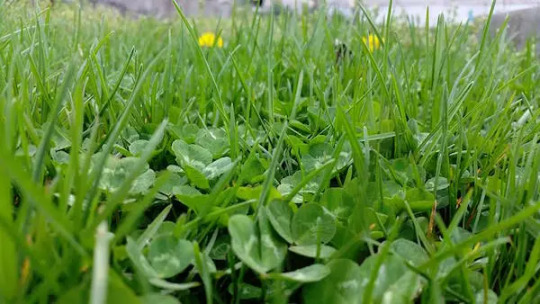
If you live in a place where you’re required to have a grass turf lawn (HOA’s come to mind…), try replacing it with native grasses instead! You could even possibly use a low-growing ground cover plant like clover to a similar effect! Reseeding/replacing an entire lawn can be a big upfront cost, but even just letting the lawn be a little messy and tall helps. If the lawn gets patchy, leave the bare spots for a little while and something different will likely pop up! Pioneer species will fill the gaps and provide benefits to other plants around them, support animals, and more! If you want to take the guesswork out of it, you could always research what the pioneer species are in your area and plant the ones you like most.
Obtaining Seeds for Cheap or Free
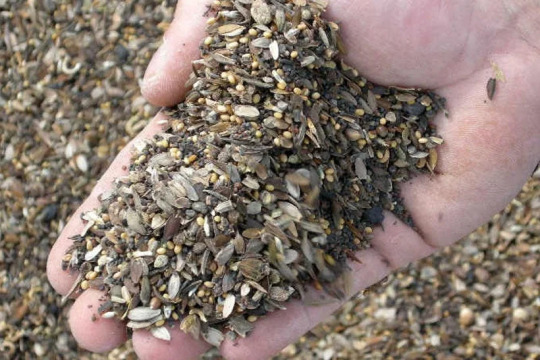
The cheapest way to start a garden is by far via seeds. However, seeds can be a bit complicated to grow, and some sources make them… way overpriced. Fortunately there are ways to get seeds for little to no cost!
Some places sell seeds for as low as a dollar, 50 cents, or 25 cents! The packets may not have a lot of seeds, but it’s definitely a good start for a low budget! I’ve personally bought cheap seed packets at Walmart--the Ferry-Morse and Burpee brands are not what we’re looking for here. Typically the cheaper ones I’ve found are American Seed (which is owned by Green Garden Products, which also owns Ferry-Morse, Livingston Seed, McKenzie Seed, and Seeds of Change. Do with that information what you will), but they’re rarely stocked near the Ferry-Morse ones in the Formal Gardening Section. I’ve most often found them on end caps near the gardening section, so you may have to weave through a few aisles to find them, but once you do there’s an array of flower and vegetable seeds to select from! Alternatively, I’ve found seeds at Dollar Tree sold 2 or 4 for a dollar in Spring as part of their seasonal product; however, when they’re out of stock, they’re typically out of stock for the year. Try to check them out early in the year!
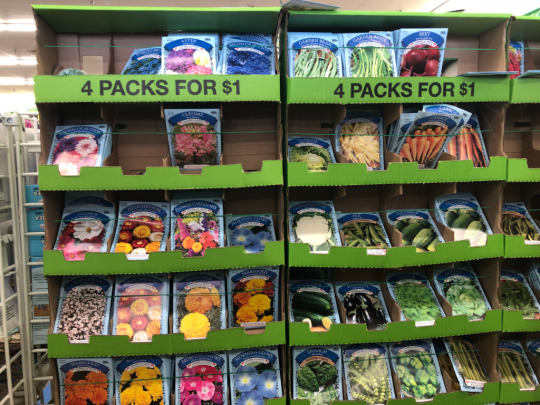
Otherwise, other seed companies like Urban Farmer or Botanical Interests will often have semi-frequent sales in spring and fall, when people are stocking up on seeds--joining their email lists can help you be the first to know when a good sale is going on!
Some foods from grocery stores will provide seeds that you can use in the garden as well. I’ve had the most luck with store-bought bagged beans, peppers, and tomatoes. Some people have had luck with watermelons, apples, citrus, squash, and more. Do keep in mind that you likely won’t get the same variety of fruit/vegetable as the one you bought--the resulting plant may look different and taste different.

Give it a shot! Pick some beans you like--if they don't grow well, at least you can eat the rest!
If you live in the US, food-producing live plants, bare roots, and seeds can often be purchased with SNAP benefits. But what does growing fruits, veggies, and herbs have to do with boosting biodiversity? While food crops aren’t typically native, they still provide valuable shelter for native insects. Some plants even have intricate relationships with native fauna--like the squash bee, a solitary bee which exclusively pollinates cucurbits like pumpkins, squash, and zucchini. And we get to benefit more directly as well! If you’re planting a diverse range of foods in your garden (as opposed to the swaths of single-plant farms that typically produce what’s sent to grocery stores), you’re supporting high levels of biodiversity by providing a variety of plants for creatures to live and hunt around.
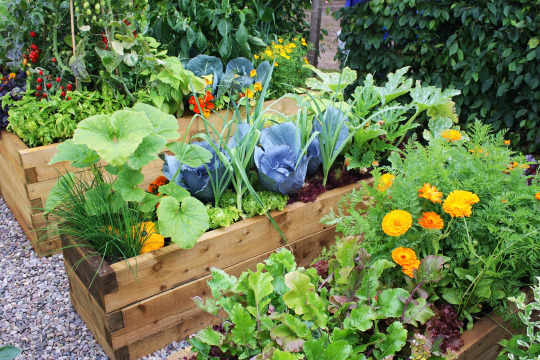
Most of the time, when we think of boosting biodiversity with a garden, we think of a colorful flower garden teeming with pollinator species. However, if we’re striving to use native species, it can be a bit difficult to find some species in stores. I can say from experience that trying to find any wildflower seeds other than butterfly weed, purple coneflowers, and black-eyed-susans is… challenging, if you limit yourself to stores like Walmart, Home Depot, and Lowe’s. You might occasionally get lucky with an ACE Hardware or a local nursery, but even then sometimes it can be hard to track down who in your area is selling what--let alone if you live in an area where no one really is selling native plants or their seeds. Not to mention, even once you find a local or online store selling the seeds you want, they can sometimes cost a pretty penny. So what do you do?
If you have the option to, consider gathering native seeds yourself! Get good at identifying the native flora and fauna--or at least, a few target plants and their lookalikes--and get ready to go! Learn where they tend to grow, when they’ll be seeding, etc. Try to identify the plant before it goes to seed (for most plants, it's easiest to identify when flowering), then check back regularly to gather seeds. Typically, if I want to learn how to collect seed from a specific plant, I just search it on Google or YouTube--oftentimes, I'm lead to the GrowItBuildIt Youtube page, so it may be a helpful resource for you as well! Of course, make sure to leave plenty of seed behind so the wild population can repopulate, and seed can feed other creatures in the area. A good rule of thumb is to take no more than 1/3rd of what's available.

Buying seed in bulk is an option if you can afford the upfront cost. Try teaming up with a few friends to buy some bulk seeds and split them amongst yourselves--you’ll get tons of seed! Prairie Moon is a popular site that'll sell seeds by the pound if you can afford the price--though they're in the US, and I believe they focus on Midwest and East Coast natives.
If you want to cheat the system, don’t buy bulk sunflower seeds--buy bags of sunflower seeds being sold as birdseed. They’re typically all black oil sunflower seeds, but they’ll sprout, and they’re fairly cheap for the amount you get!
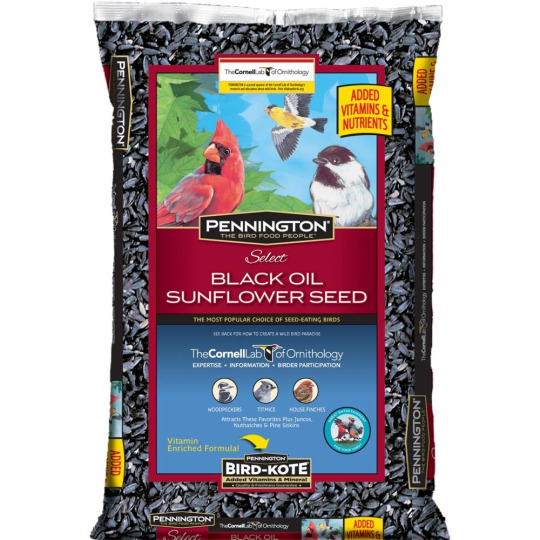
However, beware generic wildflower seed mixes! Many brands like to sell wildflower seed mixes in big box stores like Home Depot, Target, or even Dollar Tree, but they’ll often include flowers that aren’t native or possibly even invasive in your region! Before you make any purchases, double check to make sure the contained seeds won’t do more harm than good! A quality source of native seeds will provide English and Latin names for all seeds included, and will be native to the region or at least non-invasive.

See this? I don't trust this.
There’s a good handful of programs online that’ll send you free seeds if you’re planning to start a native habitat project! Poke around online and see what you can find; you might get lucky! The best time to start looking for these is fall and winter, I find--by early spring, many of them are either done or beginning to wind down... though some also start up in spring. Ultimately--just check regularly! You never know what you can find!
Other Ways to Get Plants
Don’t want to start from seed? That’s fair! You can try cuttings! Just be sure not to take too much of the plant while you do so. Make sure you’ve gotten a few leaf nodes on your cutting, and cut any flowers you may have gotten. Make sure to leave some blooms and foliage on the original plant for the creatures in the current habitat--you don’t want to destroy one habitat to make another in your garden. There’s tons of methods of rooting cuttings, many of which have different efficacy rates for different plants, but that’s a topic for another post.
If you find seedlings growing in a place where they won’t be able to sustain themselves long-term, or are in danger of being destroyed, consider relocating them! You may be able to gently dig up and transplant the seedling to your garden. Don’t do this if they’re in a place where they can easily survive--ideally, you’ll be taking plants from sidewalk cracks, heavily maintained public gardens, roadsides, etc. Do be careful while doing this--ensure your safety first!

You’re totally allowed to join gardening communities like clubs, facebook groups, and more before you’ve even put a trowel to the dirt. These are great places to learn information and advice! Many gardeners are more than happy to help out a new gardener, and will eagerly provide seeds, cuttings, or even baby plants! Talk to some people about your gardening journey and what you’re hoping to do, and you just might find some kindred spirits--or at least get more people interested in the topic!
Seed and plant giveaways and trades happen all the time in gardening clubs, as well as online! Just poke around and see what you can find! Some are explicitly trades, meaning you’re expected to send something in return, but once you get your feet on the ground with some plant knowledge you’ll be stellar! You may be able to explain you’re just starting out, and someone may send you seeds without expecting a trade, but I’d suggest trying giveaways first.

Poke around online and see if there’s a local chapter of your state’s native plant society. From there, you’ll likely be able to find a calendar of events--many of them will host plant sales in the spring, with a bunch of native plant seedlings ripe for the pickings if you can make it out and have some money to spare! Fair warning, though, you’ll want to get there early if you can. If they say they’re starting at 10, try to get there by 9:45. Year after year, there’s always record turnout, and they sell out of plants faster than ever. Just trust me on this. I’ve been let down; hopefully you won’t have to be.
Some libraries are beginning to host seed libraries! Check around and see if your library has one! Ideally, the system works best if you also have seeds to contribute in return, but if you’re just starting out I’m sure they won’t mind you taking some seeds! Just consider saving some seeds to contribute in the future and pay it forward. If your library doesn’t have a seed library? Consider asking if they’d be willing to start one! Community interest is a great way to get the ball rolling on projects like these, but they’ll only know the community is interested if the community tells them they’re interested!
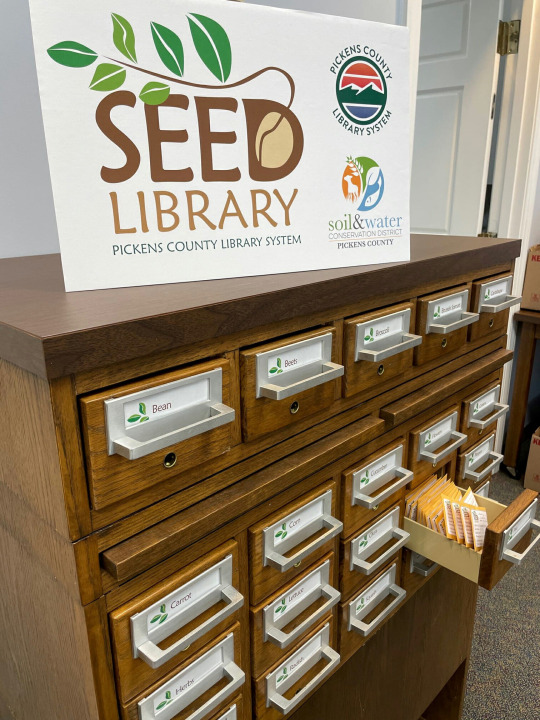
Volunteer to Garden for/with Someone Else
Maybe someone in your area wants to garden, but is struggling to find the time/energy. Many elderly people who used to garden simply can’t anymore but still would like a garden. Other people may love to have a helping hand in their garden. You might even find a few people in your area interested in renting and sharing a community garden plot with others, so they don't have to handle it all on their own! They may be interested in increasing biodiversity right now, or may be willing to if it’s brought up to them. You might be just the kind of person someone needs! Since it won't be your garden, you’ll likely need a bit of permission and collaboration to get anything in particular going, but it’s worth a shot and a way to maybe even make friends!
Again, your mileage may vary with some of these. You may not know where there's a bunch of wildflowers growing in your area, or maybe your local library doesn't have a free seed library. That's okay! Do what you're able to, find what you can find, get what you can get! And there's never any shame with starting small--in fact, starting small can make the project easier to manage and expand when you're able!
That's the end of this post! My next post is gonna be about ways to start growing plants cheaply--low cost seed starting set ups, essentially. There's a lot of good options, many of which I've used myself even! Until then, I hope this advice is helpful! Feel free to reply with any questions, success stories, or anything you think I may have forgotten to add in!
#biodiversity#solarpunk#gardening#outdoor gardening#growing from seed#ani rambles#out of queue#the biodiversity saga#i will be honest I have never flat out approached people to offer to help them garden#HOWEVER. People HAVE approached ME asking ME to help THEM with/plan THEIR garden#granted it was after I'd been gardening for a good few years. and its mostly family or family friends but yknow#people would be like 'oh wanna help me with my veggie garden?' even before I tried growing vegetables#i don't think the library near me has a seed library but you just wait until i. get the courage. to go to the library regularly.#i've seen people also make their own little seed library structures kinda like a little free library but like#i dont think my neighborhood is about that life.#if any of yall have those though it could be a great resource! also send pics because I love seeing them#not to say that this post should become a giant seed trade but if it did become that i would be the opposite of mad#if there's any typos blame my sister shes got the hotel room at like 60-something degrees and I am FREEZING#welp time to shut up now bye
1K notes
·
View notes
Text
Oh Yes!?...Oh No!?
I can recall two among many images walking the Pacific Crest Trail. One of those is the vast clearcut landscape near Snoqualmie Pass back in 1981 and walking through miles and miles of burnt out forests in California in 2018 and 2019. Seeing these impacts in person have never left me. In the middle of that range of years the Forest Service put into place the Northwest Forest Plan. The plan was enacted in 1994 and included 24 million acres across federal land. The intent was to preserve mature and old-growth forests and protect species, including the marbled murrelet, salmon and the northern spotted owl.
The Biden administration has begun a process to update the plan. This update would address changes that include the loss of nearly 7% of protected old-growth forest within the plan area because of wildfire. The loss has eliminated gains of old growth that were achieved during the first 25 years of the plan.

Existing Northwest Forest Plan area
The Forest Service wants to issue a final environmental impact statement (EIS) on the proposed amendments in 2025, under the imminent Trump administration. What the impact of that will be are not totally clear.
Wildfire in old growth forests is sure to increase due to climate change and a long history of fire suppression that has added to forest density and fuels throughout the plan area. The plan area impacts forests from the Canadian border south to just north of San Francisco...encompassing large parts of the PCT.
The public has until March 17 to comment on the Forest Services draft EIS on proposed amendments. Some potential positives in the draft amendments include long overdue tribal co-stewardship in implementing managment practices, along with other reforms to enhance the relationship between tribes and the national forests on their ancestral lands. Tribes were not consulted back in 1994 when the original NW Forest Plan was put into place.
The proposed changes would also greatly increase logging, burning and thinning within the national forests in the plan areas. For the past three decades trees 80-120 years old in national forests west of the Cascades within the plan area, including Olympic (not along the PCT), Mount Baker-Snoqualmie and Gifford Pinchot national forests have been off limits to logging. Under the proposed changes these areas would be open to logging for restoration and economic benefits to rural communities.
Within this expansive area are trees that are nearly 200 years old. These giants could also be logged for the purpose of ecological restoration. Trees older than 200 years would be off limits to logging in most circumstances.
Forests east of the Cascades in the plan area would also be open for burning, mechanical thinning and cutting for both restoration and to provide jobs for timber workers and mills. The volunteer federal advisory committee that included scientists, tribes, and academics had a goal in mind when they drafted the amendments. The amendments east and west of the Cascades are meant to create more economic opportunity for rural communities while making forests more resilient to increased fires frequency and severity of those fires.
Whether or not economics, fire/forest management are the key drivers in the proposed amendments is open to discussion. We know that fire is natural in forests. The goal of the amendment appears to also bring fire back where it has been suppressed and to tame risk by removing fuel where forest have gotten too dense. Differentiating between moist and dry forest types and young and old forests, with more logging recommended in younger and drier forests.
Ryan Talbot, Pacific Northwest conservation advocate for Wild Earth Guardians, suggests that fire is being used to justify more cutting. He says, "Fire is kind of being used a means to do more logging with a lot of code words like restoration and resiliency." Public meetings on the plan amendments outlined in the draft EIS begin in January. The Forest Service has published a calendar of meeting times and locations, links to webinars, tips on how to comment and a draft EIS (DEIS) document library in its most recent newsletter about the plan amendment.

Your thoughts and feelings about the amendment are important. If you have walked anywhere in the west, including the PCT, you have witnessed the effects of logging and fire. With each hiking season on the PCT being more and more impacted by climate change and subsequent fires is reason enough to weigh in on the DEIS. We hope you will consider adding your voice. The images of vast clearcuts and greyed out acre upon acre of burnt forest land has never left my memory. For the short time we are here on the planet maybe we can influence the life of forests along the PCT long after we have hiked our last mile and taken our final breath leaving a thriving landscape for those coming behind us.
76 notes
·
View notes
Text
9-5-2024 Garden and homesteading update,
Hello, hello!
Life's been keeping me a bit busy recently but I do have a bit of an update for the garden~
Finally Got manure in to fill in a few beds and top off rows. (Which I've started and got going to prep for winter)
Pulled everything but the carrots, cucumber, peppers and 1 tomato (tho the tomatoes on a wire line. I'm still thinking bout pulling it)
I found a few of the armenian cucumbers that might have viable seed, ive got to pull them apart and clean them tonight to dry and give a viability test. I'll leave the cucumbers growing for now. The pollinators and hummingbirds have been using them for shade and fuel. Plus I like the flush of lush foilage and ground cover. It's been extra hot this summer so we haven't seen as much produce as I usually crow about from them. When the weather starts going back to regulalry below 95*f I'm hoping to see more fruiting.
Started up a new bed in the garden. Its a raised bed, two boards tall. This one will be layered on the bottom as usual with cardboard thickly to repell and deter the grass a little bit. Instea dof paper shreds, i cracked up the sunflower stalks I've been saving up to fit the bed size and filled it a good bit with the smaller ones. Topping it off with the manur/compost. I also threw some of the dead cucumber vines with the sunflower stalks to sort of fill it. Not tight packed, just loosely. Just wanna see of it'll work similar to hugelkultur. (Link at end to Wikipedia page).
The sweet potato vines are starting to take off. Thankfully this means I'll have some greens to split between family and the chickens soon. Maybe even some spuds at the end of the season 🤞
The thyme plant kicked the can, the asparagus is ferning out, but not stalking. The basil is seeding pretty good. So with luck some wild seeded basil starts soon.
The sunchokes have stunted a bit, this week I'm gonna see about putting a shade up to see if that'll help them out.
The hollyhocks in the hen alley have been sort of taken over by grasshoppers. So not too much growth among them. Think I'll need to spend a few nights catching them, freezing them and giving them to the chickens for a little extra snack time delight. (Plus getting them out of the garden) I think at that time I'll also lay out some new cardboard as the ground cover has disintegrated pretty well. Looking good beneath on the soil.
Started filling in the area I wanted to put melons in, may instead end up using that area to grow winter veggies, like cauliflower, cabbage or broccoli.
Still need to mix the seed starting soil, cut up some cardboard tubes (gonna try to use them for some seed starting) and get those winter crops started up.
Getting ready to dig out my floral patch to plant elsewhere. (I've been waiting for cooler weather.)
And start up the new direct seed rotation plan (carrots, lettuce, radish, nasturtium and other)
And a few other minor tasks related to the garden and some major ones later too that I'm not gonna get ahead of myself yet on grandoise plans 😂
That's the garden update for now :)
🌱💚Happy Gardening and homesteading💚🌱
Links for additional infos:
https://en.m.wikipedia.org/wiki/H%C3%BCgelkultur
#homesteading#thestudentfarmer#self sufficient living#studentfarmer#self sufficiency#food#garden#gardening#low waste#chickens#urban green spaces#urban biodiversity#urban homesteading#urban gardening#urban farming#grow what you eat#eat what you grow#eattheweeds#city garden#garden pests#living with nature#armenian cucumber#carrot#raised garden beds#food preservation#food planning#living with the seasons
9 notes
·
View notes
Video
tumblr
https://homegrownnationalpark.org/
start showing up to your local city and county planning and zoning meetings and demand this. HOA meetings too.
#tiktok#biodiversity#home grown national park#urban design#urban planning#Ecosystem#gardening#community garden#garden#DIY gardening#nature
110 notes
·
View notes
Text
My experience from 86 trips around the sun:
The most beautiful things in life are not things. They are experiences, relationships, music, art, and memories of same.
#planned parenthood#positive mental attitude#sociology#nostalgia#anthropology#biodiversity#farmcore#nature#1950s#climate change
3 notes
·
View notes
Text
Sebastian interview at Buzzin' Corner, GP Japan, 2023

#f1#sebastian vettel#the last 30 seconds going to a tiny window is an extremely annoying viaplay thing that i emailed them about ages ago but well...#kept it in anyway because it's about future plans#and this: 'i hope i will see you. in the near future.'#(chiel made me think thoughts during this interview and they were not about biodiversity)#my post
20 notes
·
View notes
Text
Safeguarding the Urban Forest and Afforestation Areas: A Global Mission Rooted in Saskatoon’s Soil
In the heart of Saskatoon, where concrete streets and bustling avenues meet expansive patches of green, a quiet revolution is unfolding. It’s one that speaks to the intertwined futures of urban landscapes, ecosystems, and the communities that inhabit them. This revolution is rooted in the care and preservation of what many of us often overlook: our urban forests and afforestation areas. As the…
#afforestation areas#biodiversity#Biodiversity Conservation#carbon sequestration#City planning#Climate Action#Climate Resilience#collaboration#collaborative action#community building#community education#Community Engagement#Community Participation#community partnerships#community wellness#community-driven initiatives#conservation education#Conservation Efforts#cross-cultural dialogue#cross-cultural learning#cultural exchange#CULTURAL HERITAGE#cultural reconciliation#eco-friendly#eco-tourism#Ecological Restoration#ecosystem protection#Ecosystem Restoration#ecosystem restoration projects#ecosystem services
1 note
·
View note
Text
How does one invite a Psychedelic Rock Gecko to a 70s disco party?
Imagine the scene: a vibrant 70s disco party with spinning disco balls, colorful lights, and funky beats. Now, add a whimsical twist by inviting a Psychedelic Rock Gecko to join the festivities. While the concept is purely fanciful, it provides a creative framework to explore the unique characteristics of geckos, the essence of the 70s disco era, and the imaginative fusion of the two worlds.…
#70s disco party#animal behavior#animal imagination#animal-themed events#artistic expression#biodiversity celebration#conservation awareness#creative concepts#cultural fusion#cultural nostalgia#dance floor#disco era#disco lights#environmental enrichment#fantasy invitation#fantasy party#glittering gecko#groovy beats#imaginative exploration#imaginative fusion#imaginative storytelling#music and dance#natural world#neon colors#nostalgic celebration#party planning#psychedelic patterns#psychedelic rock gecko#vibrant colors#whimsical scenarios
0 notes
Text
(11th meeting) PLENARY- Fourth Meeting of the Subsidiary body on implementation : Consideration of conference room paper.
The Subsidiary Body was established under Article 25 of the Convention on Biological Diversity.
Watch the (11th Session) PLENARY: Consideration of conference room papers!
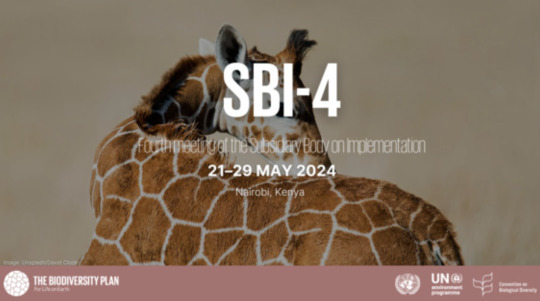
#sbi4#biodiversity#biological diversity#united nations biodiversity#genetic resources#convention on biological diversity#unon#nagoya protocol#fair and equitable sharing#united nations in nairobi#plenary sessions#part of the plan#The Biodiversity plan
0 notes
Text
Comprehensive Ecological and Arboricultural Services for Sustainable Planning
Integrating biodiversity and tree management into development planning is vital for creating sustainable and environmentally conscious projects. At Aval-Group, we specialize in providing expert biodiversity assessment consultants and arboricultural survey services to support your planning applications and ensure ecological compliance.

Our team of biodiversity net gain consultants works to help you meet the latest requirements for enhancing biodiversity in development projects. By conducting detailed ecological assessments, including bat surveys for planning, bat roost assessments, and bat emergence surveys, we ensure that protected species and habitats are preserved throughout the development process.
For projects in urban areas, our ecological survey London services deliver expert insights into the local environment, providing tailored solutions to meet the unique challenges of city planning. Our ecology consulting services, and ecological consultants are equipped with the knowledge and experience to guide your project toward sustainability and compliance with regulations.
In addition to ecological services, Aval-Group offers comprehensive arboricultural surveys for planning. Our arboricultural consultants assess the health and safety of trees on your development site, ensuring that your project protects valuable tree stock while meeting regulatory standards. Whether you need an arboricultural consultant in London or elsewhere, we provide detailed reports and recommendations to help you incorporate trees into your planning process.
By engaging Aval-Group’s arboricultural surveyors and ecology experts, you gain access to industry-leading services that balance development goals with environmental stewardship. From biodiversity assessment consultants to arboricultural consultants for planning, our integrated approach ensures your project meets ecological and arboricultural standards while fostering long-term sustainability.
Contact Aval-Group today for professional ecological and arboricultural services that help you create responsible, compliant, and environmentally friendly developments. Let us guide you through the complexities of planning with ease and expertise!
#- Biodiversity Assessment Consultants#- Bat Survey for Planning#- Bat Roost Assessment#- Bat Emergence Survey#- Biodiversity Net Gain Consultants#- Ecological Survey London#- Ecology Consulting Services#- Ecological Consultant#- Arboricultural Survey London#- Arboricultural Consultants#- Arboricultural Survey#- Arboricultural Survey for Planning#- Arboricultural Consultants for Planning#- Arboricultural Consultant London#- Arboricultural Surveyor#- Sustainable Development#- Environmental Planning#- Tree Management Services
0 notes
Text
What to Do Once Things Are Planted?
This is my seventh post in a series I’ll be making on how to increase biodiversity on a budget! I’m not an expert--just an enthusiast--but I hope something you find here helps!
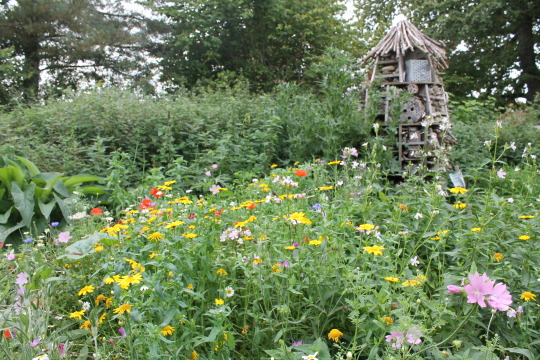
So you’ve gotten started on making a garden to boost biodiversity! 10/10, excellent work! So, now what?
First, you’ll need to keep watering the plants--especially if you’re going through a dry season. Native plants will be more acclimated to your area’s seasonal weather, but they’ll need a helping hand while they’re getting established--especially if you’re starting with young, tender seedlings. With that in mind, if you accidentally skip out on crucial watering days, don't panic! There's been tons of times where I haven't watered for an entire summer and had perennials come back the next spring! Even this year, during a heatwave, I completely did not water my swamp milkweeds, but they're already popping back up! You may also need to go in and weed, especially if you’re seeing invasive species popping up in the garden. Invasives are no good--if you do anything, do your best to get those out as effectively and safely as possible!
If you’re needing to maintain your shrubs in spring and summer, double check to make sure there are no active bird or insect nests within them. If it’s possible to wait until later to cut your shrubs, it could be extremely beneficial.
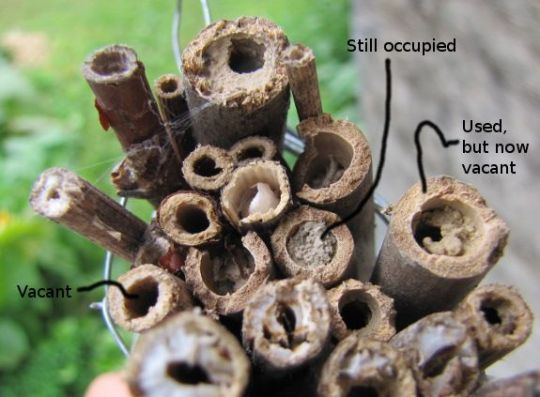
When fall and winter come around and your plants begin to die back, don’t cut them away if you can! Many insects overwinter in the plant stems left behind as perennials die back to the roots. In addition, birds will use seed heads as a source of food over the winter. Try not to clean things up until late winter/early spring, when other food sources are beginning to come back and things are growing again. By then, the insects should be waking up and leaving the plant stems as well.
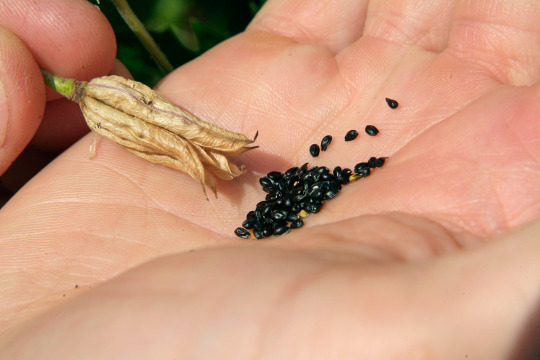
However, don’t let this discourage you from collecting seeds! Collecting seed from your plants is a great way to continue gardening at low cost, as well as making friends and encouraging others to garden by trading seeds or offering them as gifts. If you're in an area where you do need to cut back, this is a great opportunity to collect the seeds and save them for the future. You could also cut back what’s dying in the front yard and keep things to overwinter in the backyard. Some overwintering habitat is better than no overwintering habitat.
Want to know how to collect seeds from specific plants? I've found YouTube to be a great source of info for this! Knowing what you're doing and when is key to getting a viable harvest.
As your mulch begins to break down, you’ll need to keep adding more to top it off, if you can. It can get a bit repetitive, but no worries--the mulch breaking down means your soil is improving!
If possible, add to your garden! Expand, add in new things, and keep encouraging the growth of native plants. If you couldn’t add that water feature in year one, see if you can in year two! New interest in birds? Add a birdhouse, or more bird feeders. Loving the butterflies? Add plenty more nectar-rich plants, or do more research into what they lay their eggs on! Want more color? See what else you can add in! Came into some new pots to expand your flowerpot garden with? Find cool native plants to put in them! I always encourage people to start small and then expand over time, as opposed to starting big and getting overwhelmed.
Keep learning and observing native species of birds, insects, mammals, etc. See what’s coming to your yard now, and look into how you can improve things more for them on your budget. If you aren’t seeing what you were hoping, see if there’s other actions you can take that’ll attract what you’re hoping to see in your backyard habitat. Knowing more about the world around you makes it easier to know how to help the world around you. Talk to others about what you’re doing, the changes you’ve made, and the results you’ve seen! Curious neighbors? Work friends? Your closest homies? Your family? All fair game! You just might be the one who gets someone else interested in making their space a habitat for local wildlife!
That’s the end of this post! My next post is gonna be about the secret Other Thing you can do to help biodiversity--tackling invasives! Until then, I hope this advice was helpful! Feel free to reply with any questions, your success stories, or anything you think I may have forgotten to add in!
#biodiversity#solarpunk#gardening#outdoor gardening#ani rambles#out of queue#the biodiversity saga#at least it hasn't been 2 months since the last post amiright#i know its september so by this point a lot of northern hemisphere folks are winding down on gardening#buuuut winter's a good time to buy seeds for cheap! and for plotting and planning#and meanwhile the southern hemisphere will be just gearing up!#either way I hope this advice has been helpful so far!
407 notes
·
View notes
Text
MIT delegation mainstreams biodiversity conservation at the UN Biodiversity Convention, COP16
New Post has been published on https://thedigitalinsider.com/mit-delegation-mainstreams-biodiversity-conservation-at-the-un-biodiversity-convention-cop16/
MIT delegation mainstreams biodiversity conservation at the UN Biodiversity Convention, COP16
For the first time, MIT sent an organized engagement to the global Conference of the Parties for the Convention on Biological Diversity, which this year was held Oct. 21 to Nov. 1 in Cali, Colombia.
The 10 delegates to COP16 included faculty, researchers, and students from the MIT Environmental Solutions Initiative (ESI), the Department of Electrical Engineering and Computer Science (EECS), the Computer Science and Artificial Intelligence Laboratory (CSAIL), the Department of Urban Studies and Planning (DUSP), the Institute for Data, Systems, and Society (IDSS), and the Center for Sustainability Science and Strategy.
In previous years, MIT faculty had participated sporadically in the discussions. This organized engagement, led by the ESI, is significant because it brought representatives from many of the groups working on biodiversity across the Institute; showcased the breadth of MIT’s research in more than 15 events including panels, roundtables, and keynote presentations across the Blue and Green Zones of the conference (with the Blue Zone representing the primary venue for the official negotiations and discussions and the Green Zone representing public events); and created an experiential learning opportunity for students who followed specific topics in the negotiations and throughout side events.
The conference also gathered attendees from governments, nongovernmental organizations, businesses, other academic institutions, and practitioners focused on stopping global biodiversity loss and advancing the 23 goals of the Kunming-Montreal Global Biodiversity Framework (KMGBF), an international agreement adopted in 2022 to guide global efforts to protect and restore biodiversity through 2030.
MIT’s involvement was particularly pronounced when addressing goals related to building coalitions of sub-national governments (targets 11, 12, 14); technology and AI for biodiversity conservation (targets 20 and 21); shaping equitable markets (targets 3, 11, and 19); and informing an action plan for Afro-descendant communities (targets 3, 10, and 22).
Building coalitions of sub-national governments
The ESI’s Natural Climate Solutions (NCS) Program was able to support two separate coalitions of Latin American cities, namely the Coalition of Cities Against Illicit Economies in the Biogeographic Chocó Region and the Colombian Amazonian Cities coalition, who successfully signed declarations to advance specific targets of the KMGBF (the aforementioned targets 11, 12, 14).
This was accomplished through roundtables and discussions where team members — including Marcela Angel, research program director at the MIT ESI; Angelica Mayolo, ESI Martin Luther King Fellow 2023-25; and Silvia Duque and Hannah Leung, MIT Master’s in City Planning students — presented a set of multi-scale actions including transnational strategies, recommendations to strengthen local and regional institutions, and community-based actions to promote the conservation of the Biogeographic Chocó as an ecological corridor.
“There is an urgent need to deepen the relationship between academia and local governments of cities located in biodiversity hotspots,” said Angel. “Given the scale and unique conditions of Amazonian cities, pilot research projects present an opportunity to test and generate a proof of concept. These could generate catalytic information needed to scale up climate adaptation and conservation efforts in socially and ecologically sensitive contexts.”
ESI’s research also provided key inputs for the creation of the Fund for the Biogeographic Chocó Region, a multi-donor fund launched within the framework of COP16 by a coalition composed of Colombia, Ecuador, Panamá, and Costa Rica. The fund aims to support biodiversity conservation, ecosystem restoration, climate change mitigation and adaptation, and sustainable development efforts across the region.
Technology and AI for biodiversity conservation
Data, technology, and artificial intelligence are playing an increasing role in how we understand biodiversity and ecosystem change globally. Professor Sara Beery’s research group at MIT focuses on this intersection, developing AI methods that enable species and environmental monitoring at previously unprecedented spatial, temporal, and taxonomic scales.
During the International Union of Biological Diversity Science-Policy Forum, the high-level COP16 segment focused on outlining recommendations from scientific and academic community, Beery spoke on a panel alongside María Cecilia Londoño, scientific information manager of the Humboldt Institute and co-chair of the Global Biodiversity Observations Network, and Josh Tewksbury, director of the Smithsonian Tropical Research Institute, among others, about how these technological advancements will help humanity achieve our biodiversity targets. The panel emphasized that AI innovation was needed, but with emphasis on direct human-AI partnership, AI capacity building, and the need for data and AI policy to ensure equity of access and benefit from these technologies.
As a direct outcome of the session, for the first time, AI was emphasized in the statement on behalf of science and academia delivered by Hernando Garcia, director of the Humboldt Institute, and David Skorton, secretary general of the Smithsonian Institute, to the high-level segment of the COP16.
That statement read, “To effectively address current and future challenges, urgent action is required in equity, governance, valuation, infrastructure, decolonization and policy frameworks around biodiversity data and artificial intelligence.”
Beery also organized a panel at the GEOBON pavilion in the Blue Zone on Scaling Biodiversity Monitoring with AI, which brought together global leaders from AI research, infrastructure development, capacity and community building, and policy and regulation. The panel was initiated and experts selected from the participants at the recent Aspen Global Change Institute Workshop on Overcoming Barriers to Impact in AI for Biodiversity, co-organized by Beery.
Shaping equitable markets
In a side event co-hosted by the ESI with CAF-Development Bank of Latin America, researchers from ESI’s Natural Climate Solutions Program — including Marcela Angel; Angelica Mayolo; Jimena Muzio, ESI research associate; and Martin Perez Lara, ESI research affiliate and director for Forest Climate Solutions Impact and Monitoring at World Wide Fund for Nature of the U.S. — presented results of a study titled “Voluntary Carbon Markets for Social Impact: Comprehensive Assessment of the Role of Indigenous Peoples and Local Communities (IPLC) in Carbon Forestry Projects in Colombia.” The report highlighted the structural barriers that hinder effective participation of IPLC, and proposed a conceptual framework to assess IPLC engagement in voluntary carbon markets.
Communicating these findings is important because the global carbon market has experienced a credibility crisis since 2023, influenced by critical assessments in academic literature, journalism questioning the quality of mitigation results, and persistent concerns about the engagement of private actors with IPLC. Nonetheless, carbon forestry projects have expanded rapidly in Indigenous, Afro-descendant, and local communities’ territories, and there is a need to assess the relationships between private actors and IPLC and to propose pathways for equitable participation.
Panelists pose at the equitable markets side event at the Latin American Pavilion in the Blue Zone.
Previous item Next item
The research presentation and subsequent panel with representatives of the association for Carbon Project Developers in Colombia Asocarbono, Fondo Acción, and CAF further discussed recommendations for all actors in the value chain of carbon certificates — including those focused on promoting equitable benefit-sharing and safeguarding compliance, increased accountability, enhanced governance structures, strengthened institutionality, and regulatory frameworks — necessary to create an inclusive and transparent market.
Informing an action plan for Afro-descendant communities
The Afro-Interamerican Forum on Climate Change (AIFCC), an international network working to highlight the critical role of Afro-descendant peoples in global climate action, was also present at COP16.
At the Afro Summit, Mayolo presented key recommendations prepared collectively by the members of AIFCC to the technical secretariat of the Convention on Biological Diversity (CBD). The recommendations emphasize:
creating financial tools for conservation and supporting Afro-descendant land rights;
including a credit guarantee fund for countries that recognize Afro-descendant collective land titling and research on their contributions to biodiversity conservation;
calling for increased representation of Afro-descendant communities in international policy forums;
capacity-building for local governments; and
strategies for inclusive growth in green business and energy transition.
These actions aim to promote inclusive and sustainable development for Afro-descendant populations.
“Attending COP16 with a large group from MIT contributing knowledge and informed perspectives at 15 separate events was a privilege and honor,” says MIT ESI Director John E. Fernández. “This demonstrates the value of the ESI as a powerful research and convening body at MIT. Science is telling us unequivocally that climate change and biodiversity loss are the two greatest challenges that we face as a species and a planet. MIT has the capacity, expertise, and passion to address not only the former, but also the latter, and the ESI is committed to facilitating the very best contributions across the institute for the critical years that are ahead of us.”
A fuller overview of the conference is available via The MIT Environmental Solutions Initiative’s Primer of COP16.
#2022#2023#academia#affiliate#agreement#ai#AI innovation#AI partnership#AI research#America#American#artificial#Artificial Intelligence#assessment#bank#biodiversity#Blue#Building#Business#carbon#Center for Sustainability Science and Strategy#certificates#change#cities#City planning#climate#climate change#Collective#Community#compliance
0 notes
Text
Podcast Episode 14!
Nella puntata numero 14 troverete notizie sulla relazione tra uomo e biodiversità, nuove tattiche riproduttive del cervo volante e scoperte sulla locomozione dei dinosauri. Potete ascoltare il podcast gratuitamente su tutte le principali piattaforme di streaming.
In episode 14, you’ll find insights on the relationship between humans and biodiversity, new reproductive tactics of stag beetles, and discoveries about dinosaur locomotion. You can listen to the podcast for free on all major streaming platforms.
En el episodio 14 encontrarás novedades sobre la relación entre el ser humano y la biodiversidad, nuevas tácticas reproductivas del escarabajo ciervo y descubrimientos sobre la locomoción de los dinosaurios. Puedes escuchar el podcast de forma gratuita en todas las principales plataformas de streaming.

#Italiano#Drops of Science#Scienze naturali#Cervo volante#Lucanus cervus#Volo#Locomozione#Delfini#Sonar militari#Piante#Popolazioni indigene#Politiche di conservazione#Piani di conservazione#Biodiversità#Conservazione della natura#Movimento#Riproduzione#Dinosauri#Inglese#Natural sciences#Stag beetle#Flight#Locomotion#Dolphins#Military sonar#Plants#Indigenous populations#Conservation policies#Conservation plans#Biodiversity
1 note
·
View note
Text
Hey, bankers, investors, landlords, developers, etc. cities need to stop growing to be sustainable.
Now, to make cities work, we are robbing future generations of clean air and water, fertile soil, livable weather, healthy forests and grasslands, flourishing wetlands and oceans, awesome species diversity and splendid natural beauty. Shouldn’t this be considered obscene and immoral?
#planned parenthood#positive mental attitude#sociology#nostalgia#anthropology#biodiversity#farmcore#nature#1950s#climate change
2 notes
·
View notes